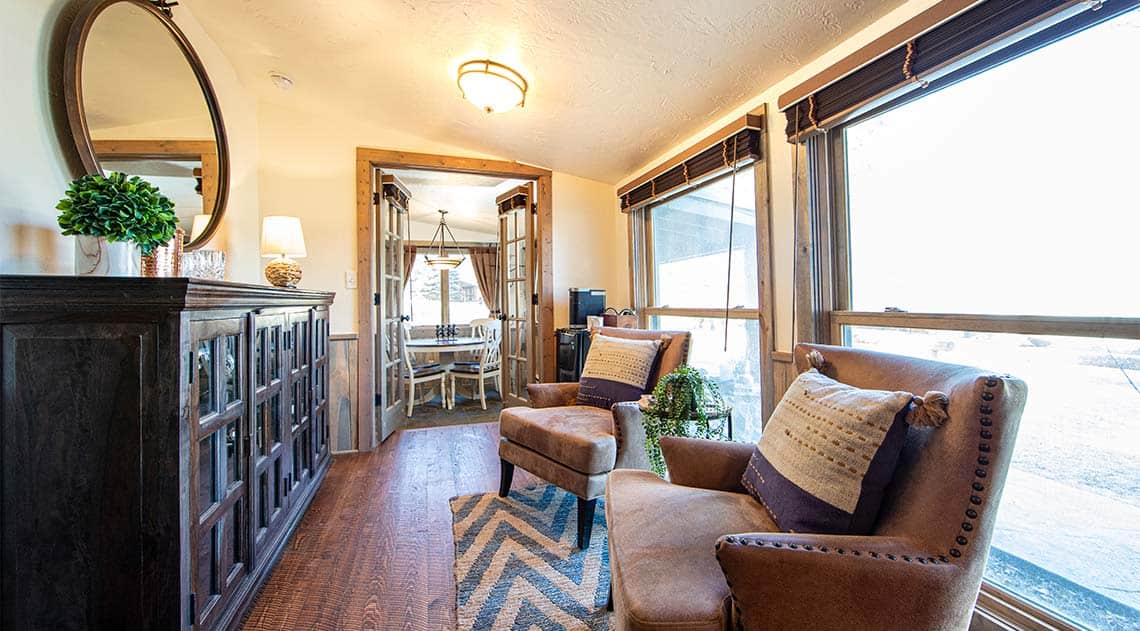How to Keep An Upstairs Room Cool In The Summer: 8 Effective Strategies
To keep an upstairs room cool in the summer, ensure that the sealing, insulation, and ventilation systems are working properly. Address any gaps in the home’s structure and ensure that the air conditioning is not being wasted.
Consider replacing air filters, insulating ductwork, investing in a zone control system, upgrading the air conditioner or furnace, adjusting HVAC system dampers, properly insulating the attic, sealing air leaks around doors and windows, and utilizing ceiling fans to increase airflow.
Additionally, keep vents open, install lightly colored curtains or drapes, avoid using heat-generating appliances, run a fan when in the room, and check the ductwork and insulation.
1. Optimize Air Conditioning System
| Optimize Air Conditioning System |
| Regularly clean and replace air filters |
| Check and fix any leaks or issues with air ducts |
| Upgrade to a more efficient air conditioning system |
| Consider using a zone control system to regulate temperature |
To keep an upstairs room cool in the summer, it is important to optimize your air conditioning system. Regularly clean and replace air filters to ensure proper airflow and efficient cooling. Check and fix any leaks or issues with air ducts to prevent air loss. Consider upgrading to a more efficient air conditioning system, which can provide better cooling and save energy. Additionally, using a zone control system can help regulate temperature by allowing you to set different cooling levels for different areas of your home. By following these steps, you can ensure a comfortable and cool upstairs room during the hot summer months.
2. Improve Insulation And Ventilation
Improving the insulation and ventilation of an upstairs room can help keep it cool during the summer. One important step is to ensure proper attic insulation, as gaps in the home’s structure can cause air conditioning to be wasted. Additionally, sealing any air leaks around doors and windows can prevent hot air from entering the room. Another option is to install attic ventilation fans, which can reduce heat buildup. Blocking out sunlight can also help keep the room cooler, and this can be achieved by adding window film or shades. Taking these actions can create a more comfortable living environment and help prevent the upstairs room from getting too hot in the summer.
3. Enhance Airflow And Circulation
To enhance airflow and circulation in an upstairs room during the summer, there are a few helpful tips to keep in mind. Using ceiling fans is an effective way to improve air circulation in the room. Keep doors and windows open during the cooler parts of the day to allow fresh air to enter the room. Utilizing floor or desk fans can also increase airflow and provide a cooling breeze. Another option is to install a whole-house fan, which can efficiently cool the entire home, including the upstairs rooms. Implementing these strategies can help keep the upstairs room cool and comfortable, even during the hot summer months.

Credit: www.clazyu.com
4. Reduce Heat Gain
When it comes to keeping an upstairs room cool in the summer, reducing heat gain is crucial. One effective strategy is to use light-colored curtains or blinds that can reflect sunlight. This helps prevent the room from overheating and keeps it cool throughout the day. Additionally, it’s important to avoid using heat-generating appliances during the hot hours as they can add to the heat inside the room. Another method is to plant shade trees or use external shading devices near windows to block direct sunlight. Moreover, applying reflective window film can significantly reduce heat transfer, keeping the room cool and comfortable. By implementing these tactics, you can effectively regulate temperature and create a cool environment in your upstairs room during the summer.
5. Utilize Natural Cooling Methods
During the summer, keeping an upstairs room cool can be a challenge, but there are several natural cooling methods you can utilize. One effective method is to open windows at night to allow cool air to enter the room. Another technique is to use cross-ventilation by strategically placing fans to create a breeze. You can also try creating a DIY swamp cooler using ice and a fan, which can help to lower the room temperature. Additionally, using thermal curtains or blinds to block heat during the day can prevent excess sunlight and heat from entering the room. By implementing these natural cooling methods, you can create a more comfortable and cool environment in your upstairs room during the summer.
6. Manage Sunlight And Heat
When it comes to keeping an upstairs room cool in the summer, managing sunlight and heat is essential. Installing blackout curtains or shades can effectively block out sunlight, preventing heat from entering the room. Additionally, using window awnings or exterior shades can help reduce heat gain by shading the windows from direct sunlight.
Another option to consider is using solar window screens, which can filter sunlight and reduce the amount of heat entering the room. Applying window films that block UV rays and heat can also help maintain a cooler temperature.
By implementing these strategies, you can effectively manage sunlight and heat in an upstairs room, ensuring a cooler and more comfortable environment during the summer months.
7. Use Heat-Reducing Techniques
To keep an upstairs room cool in the summer, there are several heat-reducing techniques you can apply:
- Apply reflective roof coatings: By applying reflective roof coatings, you can reduce heat absorption from the roof.
- Apply heat-reflective paint to exterior walls: Heat-reflective paint can help to reflect the sun’s heat away from the walls, keeping the room cooler.
- Install awnings or shades on south- or west-facing windows: Awnings or shades can provide additional shade and reduce heat gain through the windows.
- Use heat-blocking window inserts or panels: These inserts or panels can help to block heat and reduce the amount of sunlight entering the room.
By implementing these heat-reducing techniques, you can create a more comfortable and cool environment in your upstairs room during the summer months.
8. Miscellaneous Tips
8. Miscellaneous Tips:
1. Use fans and cold towels to cool down before going to bed. Place a bowl of ice water in front of a fan, sit in front of it, and let the evaporating cold air soothe your body. Similarly, wet a towel with cold water, wring it out, and place it on your forehead or other hot areas of your body.
2. Use lightweight and breathable bedding materials such as cotton or linen sheets and pillowcases. These materials allow for better air circulation and can help keep you cool throughout the night.
3. Close blinds or curtains during the hottest parts of the day to block out direct sunlight and prevent the room from overheating.
4. Use ice packs or a cooling mattress pad for added comfort. Place ice packs or a cooling pad on top of your mattress before going to bed to create a cool surface for your body to rest on.
Frequently Asked Questions On How To Keep An Upstairs Room Cool In The Summer
Why Does My Upstairs Bedroom Get So Hot?
The upstairs bedroom gets hot because of faulty sealing, insulation, and ventilation systems. Gaps in the structure waste air conditioning. Fix it by replacing air filters, insulating ductwork, upgrading HVAC systems, and sealing air leaks. Increase airflow by running the A/C fan mode, installing ceiling fans, and increasing the size and number of vents.
Why Is Ac Not Cooling Upstairs?
If your AC is not cooling upstairs, it could be due to outdated systems, blocked vents, dirty filters, leaking air ducts, or inadequate insulation.
How Do I Fix My Hot Upstairs?
To fix your hot upstairs, follow these steps: 1. Replace air filters. 2. Insulate ductwork. 3. Invest in a zone control system. 4. Upgrade air conditioner or furnace. 5. Adjust HVAC system’s dampers. 6. Ensure proper attic insulation. 7. Seal air leaks around doors and windows.
8. Utilize ceiling fans. Increase airflow to your second floor by: 1. Keeping the air conditioner running in fan mode. 2. Installing a ceiling fan. 3. Increasing the size of return vents. 4. Increasing the number of vents. 5. Clearing the vents.
6. Closing vents on lower floors. 7. Considering ductless air conditioning. 8. Getting a zoned HVAC system. Simple fixes to cool your upstairs: 1. Properly open vents. 2. Do not block return air supply. 3. Install lightly colored curtains or drapes.
4. Keep heat-generating appliances off. 5. Run a fan when you’re in the room. 6. Keep HVAC fan set to ‘on’. 7. Inspect ductwork. 8. Check insulation.
How Do I Increase Airflow To My Second Floor?
Increase airflow to your second floor by keeping the air conditioner running in fan mode, installing a ceiling fan, increasing the size and number of vents, clearing the vents, closing vents on lower floors, considering ductless air conditioning, and getting a zoned HVAC system.
Conclusion
Keeping an upstairs room cool in the summer doesn’t have to be a challenge. By implementing a few simple fixes and making some adjustments, you can create a comfortable and refreshing space. Start by properly opening vents and ensuring that the return air supply is not blocked, allowing the air to flow freely.
Installing lightly colored curtains or drapes can help minimize heat from the sun, while keeping heat-generating appliances off will prevent additional heat buildup. Running a fan when you’re in the room, and keeping your HVAC fan set to ‘on’, can also promote airflow and circulation.
Inspecting your ductwork, checking your insulation, and sealing any air leaks around doors and windows will further enhance cooling efficiency. Consider utilizing cool mist humidifiers and closing window shades to further regulate the temperature. And if all else fails, reaching out to a professional HVAC technician for guidance may be beneficial.
With these tips, you can enjoy a cool and comfortable upstairs room throughout the summer season.




